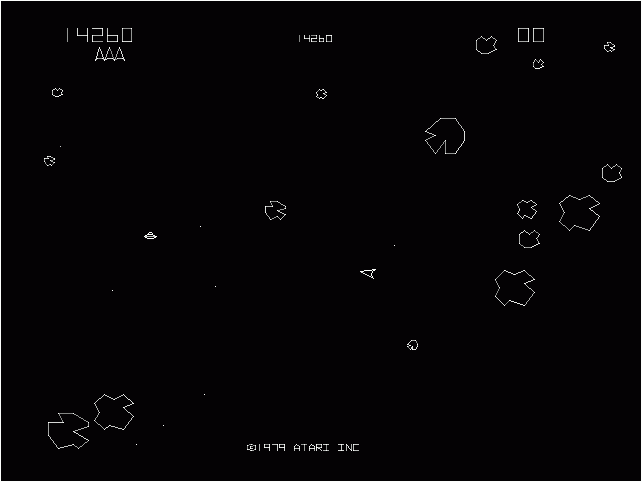
'And next week Patrick himself hopes to be back with you when owing to a great number of requests he's going to devote the whole programme to asteroids, and how to deal with them.... Which should be a boon to all fellow sufferers.'
Ronnie Barker, 'The Stars at Night' sketch from The Two Ronnies (1974)

Asteroids, also known as planetoids or minor planets. Millions of pieces of left-over rock from the formation of the Solar System, most of them orbiting between the orbits of Mars and Jupiter. Originally when the first asteroids were discovered in the nineteenth century they were observed to move like planets, yet did not show any observable disc using the instruments of the time, hence the name 'asteroids', Greek for 'star-like in form'. Of all the asteroids only 1 Ceres has achieved 'hydrostatic equilibrium' that-is-to-say is round, and is therefore a small planet rather than an asteroid.
Apart from the following mini-study of asteroid 4 Vesta, and a vain attempt to observe asteroid 2012 DA14 with binoculars as it narrowly missed Earth early in 2013, which I didn't even record, I haven't yet had any time for asteroids.
Observation #151, 2010.III.14
My fourth and final observation of Vesta, this time found from ε Leonis:
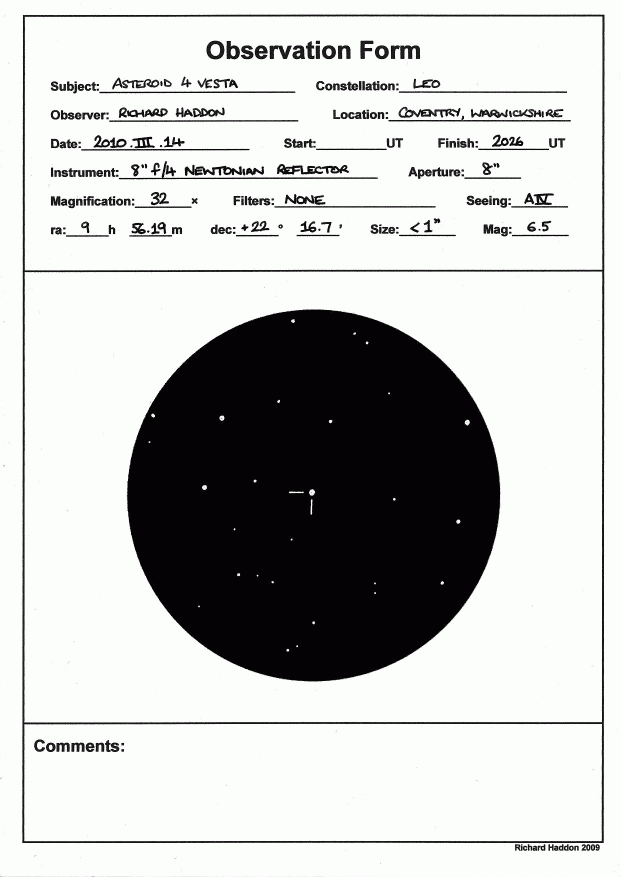
The following chart shows the relative positions of Terra and Vesta at the time of this observation:
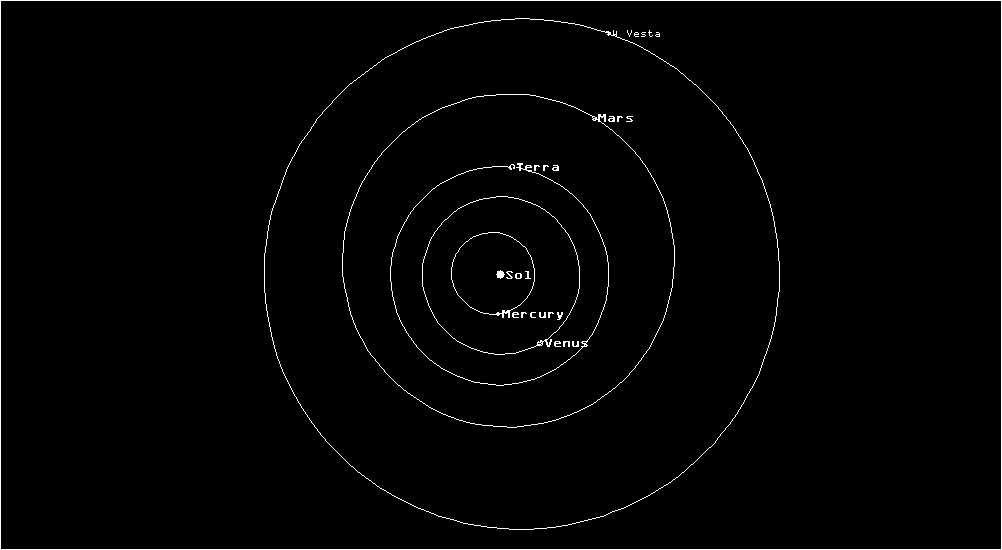
INNER SOLAR SYSTEM and VESTA
2010.III.14.2026 UT
The following chart shows all four observations of Vesta, all made whilst Vesta was retrograding. The track is plainly curving:
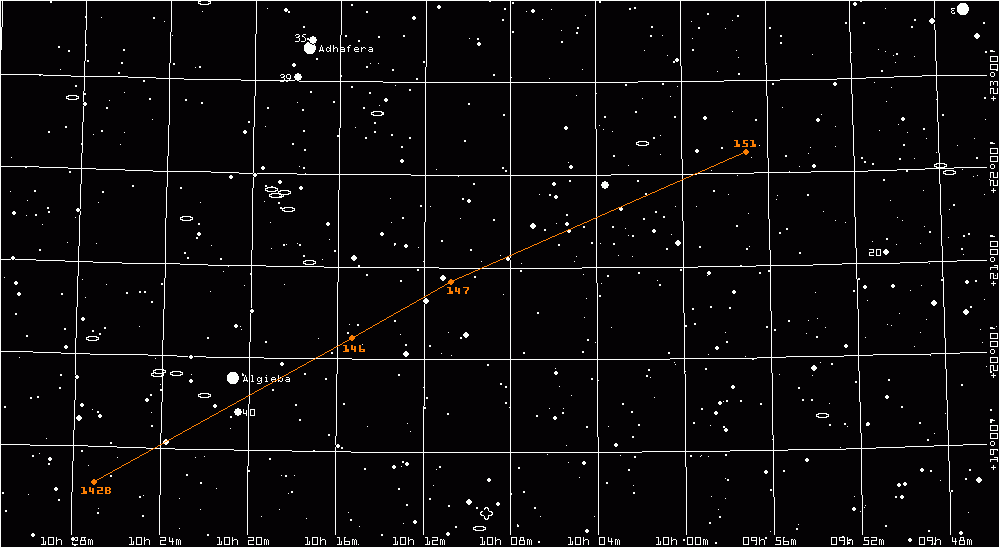
VESTA
2010.II.9-III.14
* * *
Observation #147, 2010.II.26
My third observation of Vesta, here located about 2° west of Algieba.
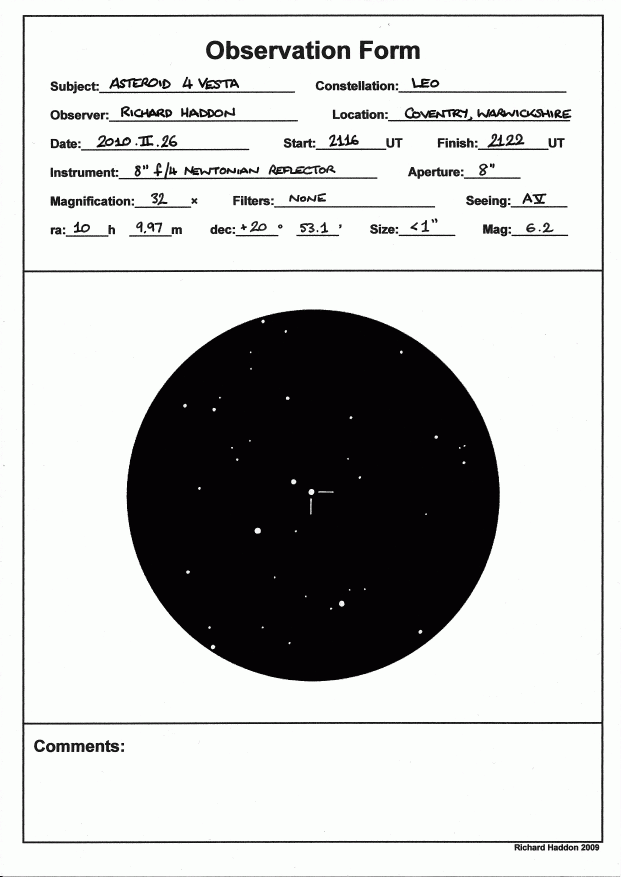
* * *
Observation #146, 2010.II.21
My second observation of Vesta, located about 40' west of Algieba.
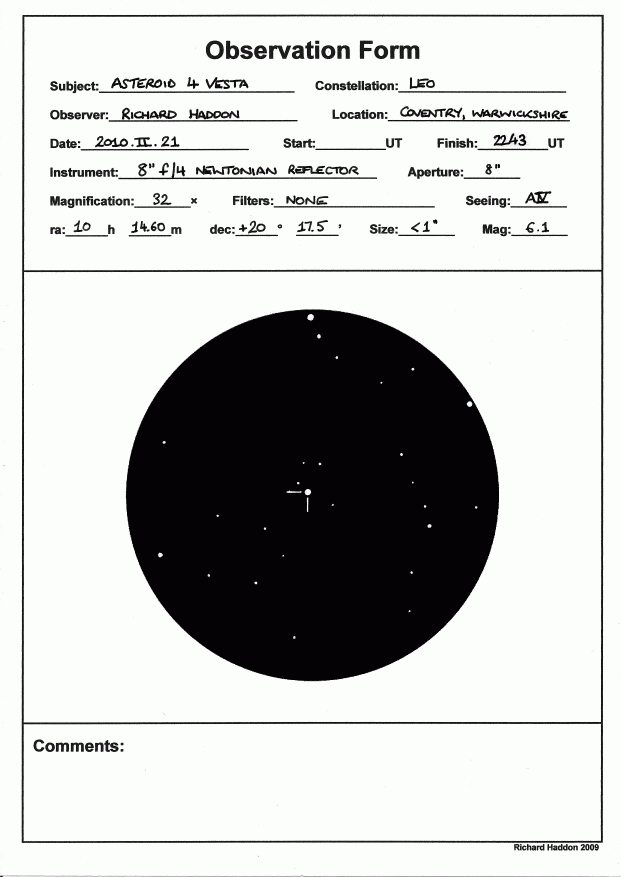
* * *
Observation #142B, 2010.II.9
My first observation of Vesta, located very roughly 2° east of Algieba. Vesta appeared slightly reddish-orangish, nearly but not quite so much as the nearby orange star HIP51161 in the same field of view.
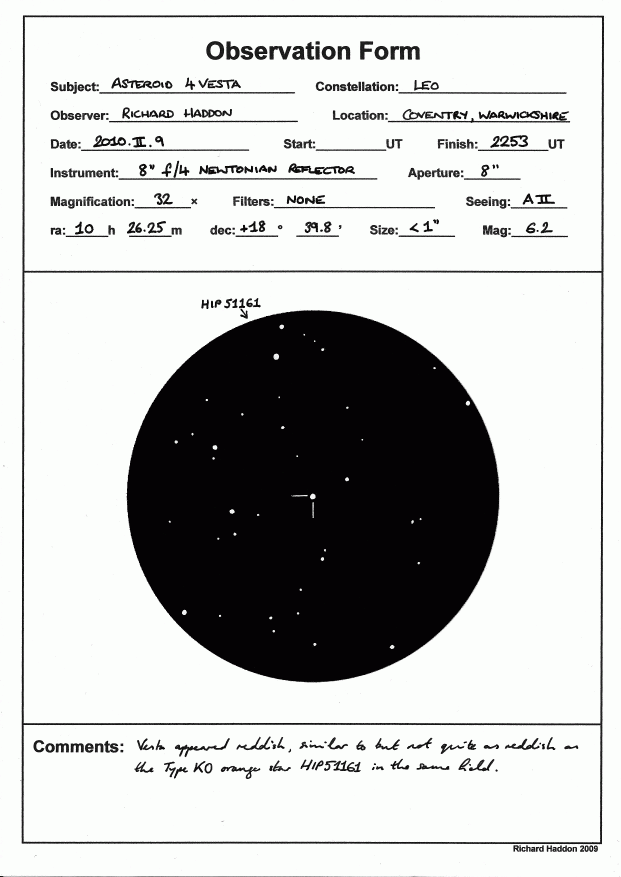
The following chart shows the relative positions of Terra and Vesta at the time of this first observation of Vesta:
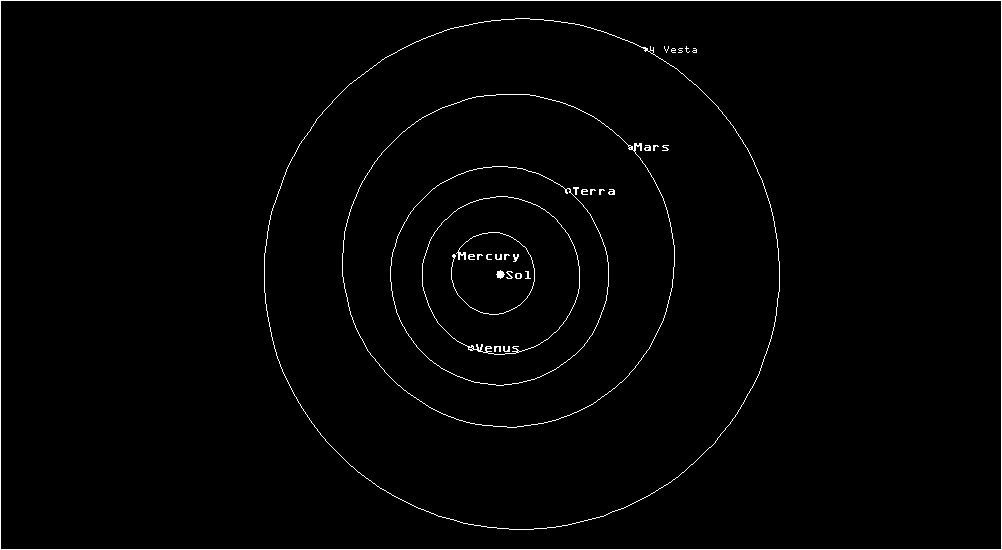
INNER SOLAR SYSTEM and VESTA
2010.II.9.2253 UT
It is possible to return to the index page by clicking the previous link.